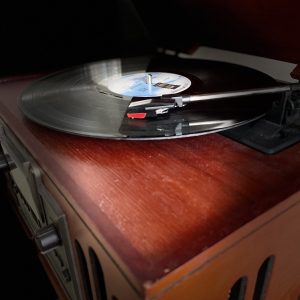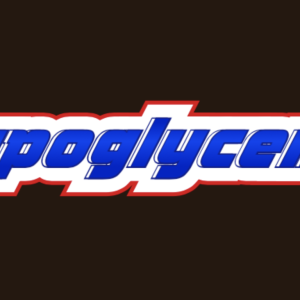Want to experience the greatest in board studying? Check out our interactive question bank podcast- the FIRST of its kind here: emrapidbombs.supercast.com
Author Blake Briggs
Introduction
Thyroid storm is rare, but has a high mortality ranging from 10-30%. It is more commonly precipitated by an acute stress event such as surgery, trauma, infection, etc. Less commonly it is from untreated hyperthyroidism.
This guide reviews the common causes, presentation, and diagnosis of thyroid storm, as well as the life-saving treatment needed in the ED.
Pathophysiology and Presentation
Remember the simplified approach to hyperthyroidism and the 2 B’s:
Increased Beta-adrenergic activity: tachycardia, palpitations, tremor, diaphoresis, heat intolerance, oligomenorrhea.
Increased Basal metabolic activity: weight loss with high appetite, diarrhea, polyuria, hyperglycemia, hypocholesterolemia, increased lipolysis.
Common physical exam findings:
Accelerate your learning with our EM Question Bank Podcast
- Rapid learning
- Interactive questions and answers
- new episodes every week
- Become a valuable supporter
Hyperpyrexia: temperature is often >102 F.
Skin: erythematous, warm skin to touch, thinning of hair.
Eyes: only Grave’s has ophthalmopathy causing exophthalmos. Inflammation of extraocular muscles and connective tissue results in proptosis and impaired eye function due to edema. Lid lag on exam.
Neck: goiter only in Grave’s.
Cardio: tachycardia with wide pulse pressure. Heart rate often exceeds 140 in >60% of patients. Atrial fibrillation can be found in ~20% of patients.
Pulm: tachypnea.
Neuro/Psych: agitation, restlessness, emotional lability, sometimes if severe enough, psychosis. High association with mortality.
Major causes include:
1) Grave’s Disease: most common cause worldwide. Autoimmune disease in which thyroid-stimulating immunoglobulin binds to the TSH receptor and stimulates it, leading to excess thyroid hormone production.
2) Toxic Multinodular Goiter: hyperactive nodules within the gland that release thyroid hormone.
3) Iodine-induced hyperthyroidism: rare. Iodine load from iodine-rich drugs like amiodarone or iodinated contrast.
Diagnosis
Note: these sick patients required a large differential and generous workup. See our handout on delirium for mnemonic and diagnostic approach!
All patients with overt hyperthyroidism will have some clinical constellation of symptoms and low TSH.
Serum TSH cannot determine the cause or degree of hyperthyroidism.
High free T4 and/or T3, however they are no higher than in patients with just simple hyperthyroidism.
There are no validated, clinical tools available to assist in diagnosis. A high index of suspicion in patients is needed in those with fever, tachycardia, and psychological symptoms, especially in those with a history of other endocrine/autoimmune disorders.
Determining cause will likely not occur in the ED, although most commonly the cause is Grave’s. Radioiodine uptake and/or thyrotropin receptor antibody measurement should be performed but this will occur in the ICU. This should never delay treatment.
Treatment
Should be without delay and in a distinct order as outlined below.
1) Control unstable beta-adrenergic symptoms Beta-blockers
2) Stop hormone release Thionamides
3) Stop new hormone production Iodine
4) Reduce inflammatory burden Glucocorticoids
Step 1 Beta-blockade
Propranolol 60-80 mg orally every 6 hours or IV 1 mg every 1-2 hours as needed
Propranolol has added benefit of reducing T3 levels by inhibiting Type 1 deiodinase.
Why propranolol? It is for sure the correct answer on boards, but it doesn’t have to be in real life. In cardiac patients or those with asthma/COPD, B1-selectivity and titratability would be more preferred. Esmolol, metoprolol, diltiazem can be used. In fact, esmolol is best suited for IV form due to rapid titration and minimizing adverse effects and quick on/off.
Step 2 Thionamides
-Propylthiouracil 200 mg every 4 hours
-Methimazole 20 mg every 6 hours
PTU is favored as it has peripheral blockage of conversion from T4 to T3. However, there is no difference in mortality or morbidity in patients receiving either drug.
Thionamides start working in ~1-2 hours.
Methimazole is preferred for less severe hyperthyroidism due to less frequent dosing and overall it is less hepatotoxic. Methimazole should be used once discharge approaches because it is less dosing.
Unfortunately, both thionamides are only in PO form. So, either the patient is able to tolerate oral intake (debatable if it’s true Thyroid Storm), or intubated with an NG/OG tube.
Side effects: agranulocytosis, hepatotoxicity, but these are complications that occur much later in the patient’s care and are not typically observed in the ED.
Step 3 Iodine
KI 5 drops PO every six hours or Lugol’s solution, 10 drops every eight hours
It should be given 1 HOUR after thionamide dose to prevent it from being used as substrate.
A large bolus of iodine inhibits further T4 and T3 production in the thyroid (Wolff-Chaikoff effect), preventing the production of new hormone for ~5-7 days. Works within a few hours.
Step 4 Glucocorticoids
IV Hydrocortisone 100 mg every 8 hours.
Glucocorticoids reduce T4-to-T3 conversion and possibly reduce the autoimmune process in Graves’ disease.
They should not be given in hyperthyroidism absent of storm.
Other critical supportive care measures
-APAP for fever
-Aggressively look for infection, empiric antibiotic coverage is not a bad call.
-Early intubation for control of airway and proper administration of medications.
-In those with Grave’s disease, radioactive iodine or thyroidectomy should be performed when clinically stable, within 5-7 days.
-Rate control for A fib (via B-blockers). A fib automatically converts in 60% patients if hyperthyroid is treated. These patients still need anticoagulation.
References:
1. Akamizu T, Satoh T, Isozaki O, et al. Diagnostic criteria, clinical features, and incidence of thyroid storm based on nationwide surveys. Thyroid 2012; 22:661.
2. Swee du S, Chng CL, Lim A. Clinical characteristics and outcome of thyroid storm: a case series and review of neuropsychiatric derangements in thyrotoxicosis. Endocr Pract 2015; 21:182.
3. Angell TE, Lechner MG, Nguyen CT, et al. Clinical features and hospital outcomes in thyroid storm: a retrospective cohort study. J Clin Endocrinol Metab 2015; 100:451.
4. Ono Y, Ono S, Yasunaga H, et al. Factors Associated With Mortality of Thyroid Storm: Analysis Using a National Inpatient Database in Japan. Medicine (Baltimore) 2016; 95:e2848.
5. Ngo SY, Chew HC. When the storm passes unnoticed–a case series of thyroid storm. Resuscitation 2007; 73:485.
6. Nayak B, Burman K. Thyrotoxicosis and thyroid storm. Endocrinol Metab Clin North Am 2006; 35:663.
7. Chiha M, Samarasinghe S, Kabaker AS. Thyroid storm: an updated review. J Intensive Care Med 2015; 30:131.
8. Ross DS, Burch HB, Cooper DS, et al. 2016 American Thyroid Association Guidelines for Diagnosis and Management of Hyperthyroidism and Other Causes of Thyrotoxicosis. Thyroid 2016; 26:1343.
9. Cooper DS, Daniels GH, Ladenson PW, Ridgway EC. Hyperthyroxinemia in patients treated with high-dose propranolol. Am J Med 1982; 73:867.
10. Cooper DS, Saxe VC, Meskell M, et al. Acute effects of propylthiouracil (PTU) on thyroidal iodide organification and peripheral iodothyronine deiodination: correlation with serum PTU levels measured by radioimmunoassay. J Clin Endocrinol Metab 1982; 54:101.
11. Mazzaferri EL, Skillman TG. Thyroid storm. A review of 22 episodes with special emphasis on the use of guanethidine. Arch Intern Med 1969; 124:684.


